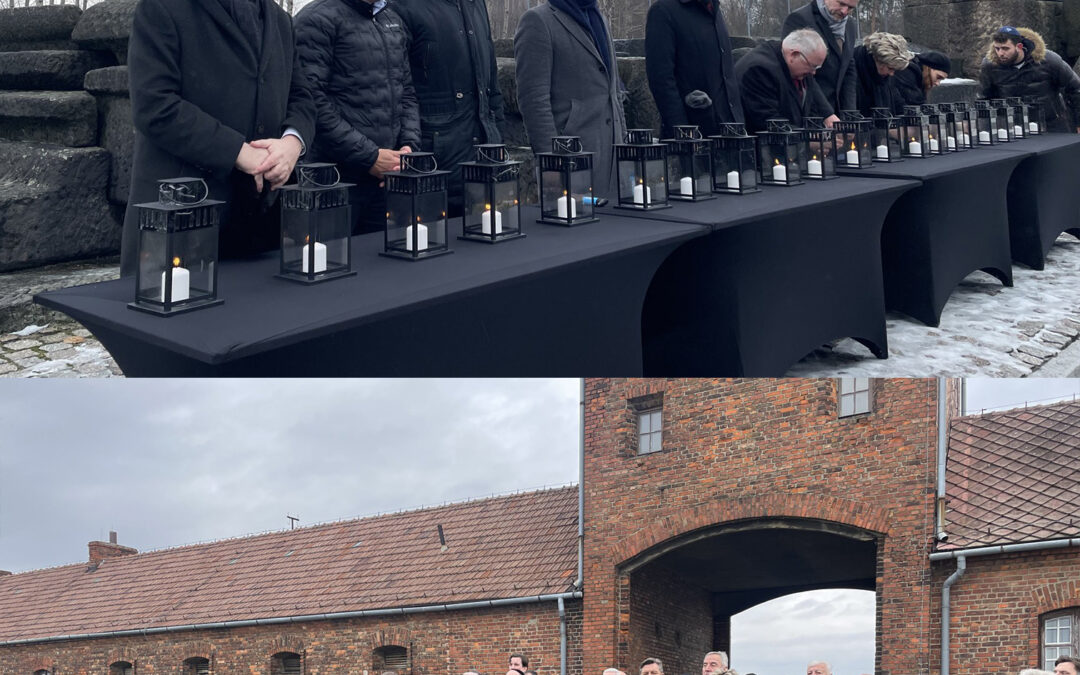It was as if Mother Nature had conspired to make the weather suitably cold, gloomy and unpleasant on 23 January – the day I made my first visit to Auschwitz. The sombre conditions were an apt backdrop for my tour through the camp set up by the German Nazis during the Second World War in occupied Poland, which can only be described as hell on Earth.
My tour of Auschwitz I, the main camp, and Auschwitz II-Birkenau, the concentration and extermination camp, will forever be engraved in my mind. Experiencing the site of unimaginable terror committed during an especially abominable period in human history filled me with rage, but it also defies comprehension for no conceivable intellectual explanation exists for a rational person to understand how this tragedy could have occurred.
Throughout history, wars and conflicts have painted vivid portraits of horror and desolation. But never before has humankind witnessed death and destruction of such profound magnitude inflicted of upon an entire people – in this case, the systemic annihilation of Jews, non-Jewish Poles, Romani, and Soviet prisoners of war.
A dreadful and eerie chill overcame me as I walked through the barracks of Auschwitz and stepped onto the railway tracks that carried the so-called “death trains” and I wondered: How was it possible to imagine, plan, and execute such an operation? How could an extermination of such a nature be carried out? How could so many remain silent about this Dantesque chapter of human history for more than four years?
It is impossible to imagine the scale of physical, psychological or spiritual pain and suffering experienced by more than one and a half million Jews and others who were coldly executed at Auschwitz as part of a sick, demented and meticulous Nazi plan to deliberately eradicate an entire group of human beings from Earth.
Again, I find myself wondering: How was it possible that this genocide could unfold for more than four years with the ignorance and inaction of the international community? After all, while the main perpetrators were the Nazis, the crimes could not have been committed without the complicit silence of countless others, who chose not to denounce these atrocities while they were occurring.
As I approach the stony terrain that leads to the mausoleum established in memory of the victims, and walk its length, which stretch more than a kilometre, it is hard not to think of the hundreds of thousands of deportees and prisoners who suffered and died while they were imprisoned within the confines of Auschwitz.
“Never Again” is an oft-repeated mantra today, and it should continue to be uttered as a reminder of the commitment required to prevent atrocities similar to those I bore witness to at Auschwitz from ever happening again. Hatred, violence, exclusion, death, and the extermination of the “other” are neither tolerable nor acceptable at any time, but even less so at the beginning of the 21st century. As global citizens, we must stand up once and for all against the extremist ideologies that are at the root of atrocity crimes.
Once again, I feel compelled to ask: Why hate those who are different from us – including those who have a different skin colour; believe in another God; or, legitimately defend their sexual identity. Why separate them from us? Why deny them the path of dialogue and reconciliation? Why exclude them?
Why fight multiculturalism? Why defend homogeneous cultures and societies? Why use violence, whether terrorist acts or military interventions, when it is possible to resolve disputes with political and diplomatic instruments? Why not pave the way for peaceful coexistence and mutual respect?
Finally: Why deny the existence of the other? To the point of wanting to eliminate others…?
“Never again” not only must be the lesson learned but also the lesson practiced today more than ever. This is the poignant realization that lingers long after leaving “the hell of humanity” that is Auschwitz.


